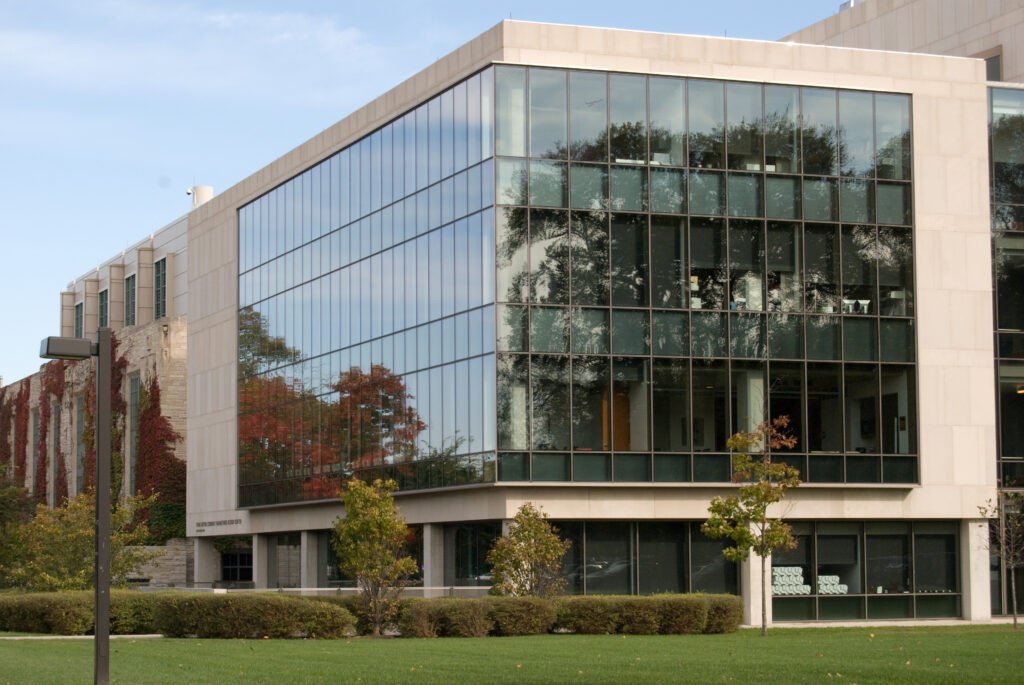
The allure of a four-day work week has captivated both employers and employees for an extended period, promising a tantalizing blend of enhanced flexibility and improved quality of life. For many, the idea of reclaiming a full extra day each week for personal pursuits, family time, or simply rest, often feels like a distant dream. Yet, what was once considered a radical notion is steadily cementing itself as a practical and highly effective operational model for forward-thinking organizations across the globe.
This isn’t merely a fleeting trend or a “shiny new toy” for corporate experimentation. Instead, it represents a profound re-evaluation of how work is structured and valued, proving that genuine productivity stems not from the mere accumulation of hours but from the strategic optimization of effort and employee well-being. As advocates like Andrew Barnes, the architect behind the global four-day week movement, succinctly put it, “It’s about creating a better work-life balance by improving productivity.” This paradigm shift emphasizes outcomes over traditional time-based metrics, challenging deeply ingrained corporate cultures.
The transition to a four-day work week, whether in its pure form or as a hybrid model, demands greater flexibility and trust between employers and their teams. The core principle posits that if individuals are empowered to manage their time more effectively, and if organizational structures are redesigned to eliminate inefficiencies, higher performance levels and improved customer satisfaction naturally follow. The evidence, increasingly supported by rigorous trials and permanent implementations, clearly demonstrates that this re-imagined work structure can lead to substantial gains in efficiency, employee engagement, and overall business success.

1. **Perpetual Guardian (New Zealand): A Foundational Experiment Redefining Productivity**The journey towards validating the four-day work week gained immense global traction thanks to the groundbreaking experiment conducted by Perpetual Guardian, a New Zealand trust company, under the visionary leadership of Andrew Barnes. This bold initiative, launched as a three-month pilot, sought to answer a fundamental question: could employees maintain the same level of productivity in four days as they typically did in five, all without any reduction in pay? The very premise challenged centuries of conventional wisdom about labor and output.
The results of Perpetual Guardian’s trial were nothing short of revelatory, setting a benchmark for future adoptions worldwide. Employee engagement soared to unprecedented levels, reflecting a workforce that felt valued, trusted, and significantly more motivated. Concurrently, the company observed a dramatic reduction in sick days, which were effectively halved, indicating a substantial improvement in employee health and well-being. Furthermore, the trial led to improved talent retention, a critical metric in today’s competitive labor markets.
What truly drove this profound change, as Barnes himself articulated, was the strategic focus on “creating a better work-life balance by improving productivity.” The company empowered its team members with greater autonomy, allowing them to manage their time with enhanced effectiveness. This empowerment, in turn, unlocked higher performance levels and cultivated a noticeable improvement in customer satisfaction. The compelling data from this pilot quickly convinced Perpetual Guardian’s leadership to make the four-day week a permanent policy, solidifying its place as a global exemplar and proving that “healthier, happier, more engaged staff are more productive, more creative, and give a better customer experience.”

2. **Microsoft Japan: A Tech Giant’s Trial Yields Astonishing Efficiency Gains**In 2019, the global tech behemoth Microsoft decided to test the waters of the four-day work week, launching its “Work-Life Choice Challenge” in Japan. This ambitious one-month experiment involved giving employees Fridays off, effectively reducing their workweek to four days, crucially without any reduction in their salaries. For a company of Microsoft’s scale and influence, this was a significant step, and the world watched keenly to see if such a radical shift could genuinely deliver tangible benefits in a culture often associated with long working hours.
The outcomes of Microsoft Japan’s challenge were undeniably striking, providing concrete evidence that fewer hours do not necessarily equate to reduced output; in fact, the opposite can be true. The company reported an astonishing 40% boost in productivity, a figure that far exceeded many initial expectations. This surge in efficiency was attributed to several factors, including employees’ heightened focus during their shorter workdays and a concerted effort to optimize workflows and meeting structures. Meetings became shorter and more purposeful, and time management improved across the board.
Beyond the impressive productivity gains, Microsoft Japan also experienced notable reductions in operational costs. With employees spending less time in the office, the company saw a decrease in electricity consumption and printing expenses, highlighting an unexpected environmental and financial benefit of the shorter week. This trial served as a powerful testament to the idea that by fostering environments where employees are motivated to manage their time more effectively, organizations can achieve exceptional results and provides a scalable example for other large corporations.

3. **Kickstarter: Prioritizing Employee Well-Being for Enhanced Performance**Kickstarter, the renowned crowdfunding platform, made a significant organizational leap in 2022 by transitioning its entire workforce to a four-day work week. This move was not merely an operational adjustment; it was an integral component of a broader, more profound commitment to workplace flexibility and employee well-being. Leadership at Kickstarter recognized that issues such as burnout and disengagement were becoming increasingly prevalent concerns, and they viewed the shift as a proactive opportunity to enhance overall job satisfaction.
The impact of this strategic change at Kickstarter has been markedly positive, challenging conventional assumptions about the direct correlation between hours worked and productivity. The company has proudly reported substantial improvements in both employee morale and engagement, indicating a healthier, more motivated workforce. Crucially, these positive shifts have been achieved without any reported negative impact on business performance, proving that prioritizing the well-being of employees can directly contribute to, or at the very least maintain, operational effectiveness.
Kickstarter’s experience offers a compelling narrative for companies grappling with the challenge of retaining top talent and fostering a positive internal culture. By explicitly valuing and investing in the mental and physical health of its employees through a reduced workweek, Kickstarter has likely strengthened its employer brand, making it a more attractive destination for skilled professionals. “Clearly it can be done,” as the context affirms, showcasing Kickstarter’s leadership in this evolving workplace transformation.

4. **Buffer: A Permanent Shift to a Reduced Workweek for Sustainable Success**Buffer, a prominent social media management company, embarked on its four-day work week journey with a pilot program in 2020. Unlike some organizations that experiment for a limited period, Buffer approached this trial with a clear intention to evaluate its long-term viability and impact. After a thorough assessment of key performance indicators (KPIs) and gathering employee feedback, the company confidently decided to make the four-day work week a permanent fixture of its operational policy. This commitment signaled a belief in the model’s enduring benefits.
The internal data collected by Buffer during and after its pilot phase was highly persuasive. The company found that, remarkably, productivity levels remained consistently steady throughout the transition, defying any concerns that a shorter week would inherently lead to a drop in output. Even more significantly, Buffer observed a substantial decrease in employee stress levels, a critical finding in an industry often characterized by high demands and rapid changes. This reduction in stress is a direct indicator of improved employee well-being.
Buffer’s success story underscores a crucial point for modern businesses, especially those operating in knowledge-based industries: the most critical measure of success should unequivocally be centered on results and outcomes, rather than the archaic metric of hours spent at a desk. By making the four-day week permanent, Buffer affirmed its trust in its employees to manage their work efficiently and deliver against objectives. This philosophy fosters an environment where efficiency and impact are prioritized over mere presence, providing a powerful model for other companies looking for sustainable operational improvements.

5. **Panasonic: Offering Flexibility at Scale with an Optional Four-Day Work Week**While many companies have implemented a mandated four-day work week for all employees, the global electronics giant Panasonic opted for a more nuanced and flexible approach in 2022. Instead of a universal directive, Panasonic introduced an *optional* four-day work week, providing its employees with the choice to adopt this compressed schedule if it aligned better with their individual needs and preferences. This strategy highlights a growing understanding that “one-size-fits-all” solutions may not always be optimal for large, diverse organizations.
Panasonic’s flexible model has proven particularly effective in reinforcing the broader emphasis on individualized work arrangements that is becoming increasingly critical in the modern talent landscape. By allowing employees to determine the schedule that best suits their personal circumstances, the company not only empowers its workforce but also demonstrates a deep commitment to supporting a healthy work-life integration. This approach fosters a sense of autonomy and trust, which are powerful drivers of employee loyalty and engagement within a massive corporate structure.
For large organizations that might be hesitant to implement sweeping, mandatory changes across all departments and roles, Panasonic’s model provides a scalable, low-risk alternative. It allows different teams and individuals to explore the benefits of a shorter week without disrupting existing operational norms for those who prefer or require a traditional schedule. This cautious yet progressive stance enables a smoother transition, gathering internal data and feedback gradually before potentially broadening the initiative and shaping a more responsive and employee-centric corporate culture.
The preceding examples underscore a powerful truth: the four-day work week is not a mere theoretical concept, but a tangible, high-impact strategy being embraced by diverse organizations. Moving beyond initial experiments, we delve deeper into how more companies and even national trials are harnessing this innovative model to achieve remarkable gains in productivity, employee well-being, and competitive advantage. The momentum is undeniable, with each success story building a more compelling case for a fundamental re-evaluation of traditional work structures.

6. **Atom Bank: Innovating in the Financial Sector with a Reduced Workweek**In a sector often characterized by rigid schedules and demanding hours, Atom Bank, a trailblazing UK-based digital bank, took a bold step in 2021 by implementing a four-day work week. This significant transition involved reducing the standard workweek to 34 hours for all employees, critically, without any reduction in their salaries. It was a strategic declaration, signaling a commitment to modernizing work practices within the traditionally conservative financial services industry.
Atom Bank’s leadership framed this move not as a cost-cutting measure, but as a proactive and strategic initiative designed to attract and retain top talent. In today’s highly competitive labor market, offering a superior work-life balance has become a unique selling proposition, particularly for skilled professionals seeking more sustainable career paths. The bank recognized that to stand out, it needed to offer more than just competitive compensation.
Despite the reduced hours, Atom Bank has consistently reported no decline in the quality of its customer service or overall operational efficiency. This impressive outcome effectively challenges long-held assumptions that financial institutions cannot adapt to such flexible models without compromising critical functions. Their experience serves as a powerful testament that even sectors perceived as rigid can successfully adopt transformative work models, proving that thoughtful implementation can overcome perceived industry-specific obstacles.

7. **Oslo Software Development Firm: A Comprehensive Case Study in Productivity Soaring**In Oslo, Norway, a 150-employee software development firm faced escalating challenges by 2022: rising burnout, missed deadlines, and an alarming 18% employee turnover rate. In response, leadership made a decisive and radical move: a four-day workweek with no reduction in pay. This wasn’t a sudden shift; teams dedicated three months to meticulously redesigning workflows, eliminating redundant meetings, and integrating time-tracking tools to support the transition. Managers also received specialized training focused on outcome-based performance metrics, shifting the cultural emphasis from hours logged to results achieved. As CEO Lena Larsen aptly stated, “We shifted from counting hours to celebrating results.”
Six months post-launch, the impact was nothing short of stunning, even for initial skeptics. The firm reported an exceptional 25% increase in code output and client project completion rates, clearly demonstrating enhanced efficiency. This was accompanied by a significant boost in employee satisfaction, with 89% reporting an improved work-life balance. Financially, the company saw a robust 12% year-over-year revenue growth despite the reduction in working hours, an outcome that directly contradicts traditional expectations. Furthermore, sick days plummeted by 62.5% and client complaints decreased by 66.6%, signaling a healthier workforce and improved service delivery.
The “secret sauce” behind this success lay in cultivating intense focus. Employees, knowing they had limited time, naturally prioritized high-impact tasks. Senior developer Amir Khan highlighted this, noting, “With Fridays off, I’m laser-focused Monday to Thursday.” Meetings were strategically capped at 15 minutes, and “no-meeting Wednesdays” became sacred for deep work, fostering uninterrupted concentration. This optimized approach, coupled with the benefit of an extra day off, dramatically reduced burnout. HR director Sofia Mendez confirmed, “We saw a 40% drop in burnout-related leave within four months,” underscoring the profound positive effect on employee well-being and sustained creativity.
This transformative shift also profoundly reshaped the company’s culture, moving away from a previous culture of “presenteeism” to one of “goal-getters.” Teams set ambitious weekly goals, and achieving them meant a well-earned, guilt-free Friday off, significantly boosting peer accountability. The firm rapidly became a magnet for top talent, with job applications skyrocketing by 200% in just six months. Lena Larsen noted, “We’re no longer competing just on salary. Our workweek is our USP,” clearly positioning the four-day model as a distinct competitive advantage in recruitment and retention.
Addressing potential hurdles, the firm effectively managed client concerns through staggered schedules. While the majority of staff enjoyed Fridays off, a skeleton crew maintained essential coverage on Mondays through Thursdays, ensuring seamless client support without disruption. To prevent the pitfall of employees cramming five days of work into four, managers actively monitored workloads and enforced strict “no overtime” policies, using time-tracking data to ensure tasks were distributed fairly and sustainably across the team.

8. **South Cambridgeshire District Council: Proving the Model in Public Service**The discussions around the four-day work week often center on the private sector, but its potential benefits extend far beyond. South Cambridgeshire District Council in the UK provides a compelling example of a public service entity successfully transitioning to this model. Their implementation, despite facing initial opposition and skepticism typical of large governmental organizations, demonstrated that even essential public services can adapt and thrive under a compressed work schedule.
The results from the Council’s adoption were remarkably positive. A detailed assessment revealed that 15 out of 17 key performance indicators (KPIs) showed significant improvement. This outcome is particularly noteworthy because it demonstrates tangible gains in public service delivery and operational efficiency, directly benefiting the local community and stakeholders. It underscores that with careful planning and commitment, the four-day week can enhance, rather than hinder, the effectiveness of public organizations.
This success offers a vital blueprint for other governmental bodies and public services worldwide. It highlights that by focusing on productivity and employee well-being, even organizations with complex stakeholder demands and stringent operational requirements can achieve better outcomes. The Council’s experience helps to dispel the notion that the four-day week is solely for agile tech startups, broadening its applicability across the entire economic spectrum.

9. **The UK 4-Day Work Week Pilot: A Landmark Collective Experiment**In 2022, the United Kingdom became the host of the world’s largest four-day work week trial, an ambitious undertaking involving 61 companies and nearly 3,000 employees. Organized by the pioneering advocacy group 4 Day Week Global, this extensive pilot program adhered to the impactful “100:80:100” model: participants received 100% of their pay for 80% of their working hours, with a mutual commitment to maintain 100% productivity. This rigorous framework aimed to scientifically assess the viability and benefits of a reduced work schedule on a grand scale.
The collective results of this landmark trial were nothing short of striking, providing robust, real-world data to support the growing movement. A significant 92% of the participating companies opted to continue with the four-day work week beyond the trial period. This overwhelming rate of retention among businesses speaks volumes about the tangible and positive impacts experienced by these diverse organizations, ranging from improved staff morale and reduced burnout to sustained or even increased output.
Further corroborating these findings, a concurrent 2022 study conducted by Henley Business School independently observed that productivity levels either remained steady or, in many cases, actually increased in companies that transitioned to a four-day work week. These combined insights from both the practical implementation of the pilot and independent academic research provide a powerful body of evidence. They reinforce the idea that a shorter work week can drive efficiency, foster greater employee engagement, and ultimately lead to more sustainable business practices across various industries.

10. **Iceland’s National Four-Day Work Week Trials: Setting the Global Standard**Iceland truly set a crucial precedent for the global discourse on the four-day work week by conducting extensive national trials between 2015 and 2019. These ambitious experiments involved more than 2,500 workers, representing approximately 1% of the entire Icelandic workforce, making it one of the most comprehensive national evaluations of a reduced work schedule to date. The core of the trial involved cutting weekly working hours from the traditional 40 down to approximately 35 or 36, crucially, without any reduction in pay for the participating employees.
A joint study conducted by Alda and Autonomy meticulously analyzed the outcomes, revealing overwhelmingly positive results. In the vast majority of workplaces involved in the trials, productivity and the provision of services either remained consistent or, impressively, showed improvements. This finding directly challenged the deeply ingrained belief that fewer working hours would inevitably lead to a decline in output, providing robust data to the contrary.
Beyond productivity, the human element of the trial yielded significant benefits. Workers reported substantial reductions in stress and burnout, accompanied by a noticeable improvement in their overall work-life balance. These qualitative gains highlighted the profound positive impact on employee well-being, reinforcing the idea that a rested and less stressed workforce is a more engaged and effective one.
The long-term impact of Iceland’s pioneering efforts is perhaps its most compelling aspect. By 2022, spurred by the success of these trials, an astonishing 59% of Iceland’s entire workforce had either successfully transitioned to shorter working hours or had formally gained the right to request them. This widespread adoption at a national level demonstrates that the four-day work week is not merely a corporate experiment, but a viable, sustainable, and highly desirable model for an entire economy, fundamentally reshaping how work is perceived and structured across the country.
The narrative is clear: from individual companies to nationwide movements, the four-day work week is transforming the landscape of employment. What began as a bold experiment is now becoming a recognized pathway to enhanced productivity, deeper employee satisfaction, and a more sustainable future for businesses and their people. As leaders contemplate the next evolution of work, the evidence from these pioneers offers a compelling invitation to reimagine what’s possible. The question is no longer if it can be done, but rather, who will be next to unlock its undeniable potential.



